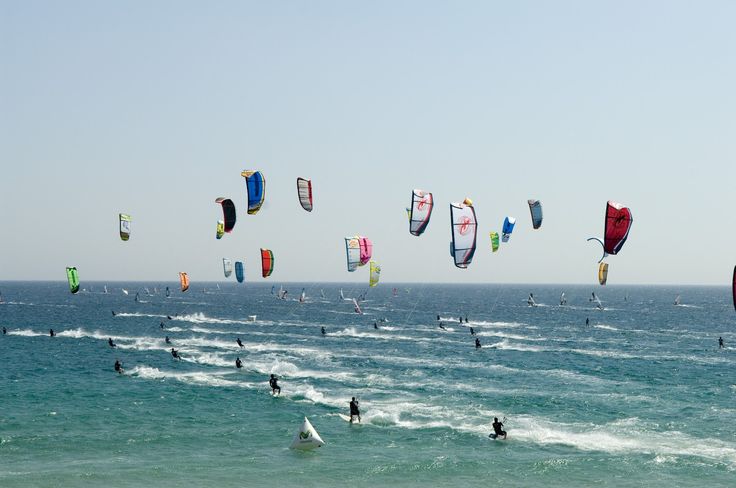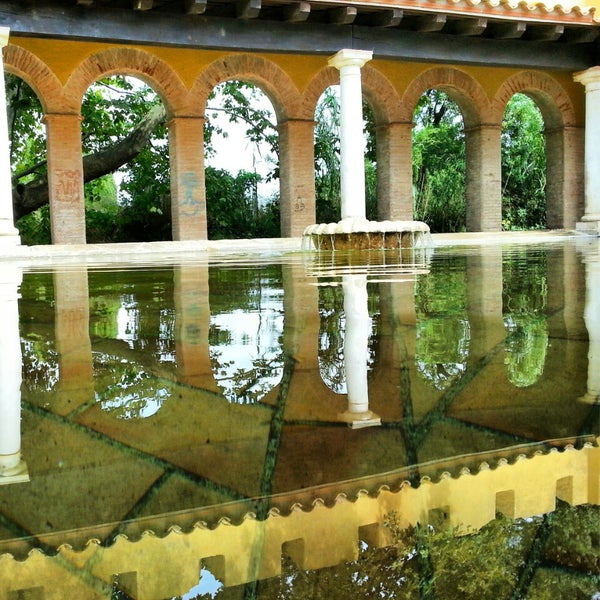Explore the Ancient Ruins of Empúries | Travel
Mosaic floor of a Roman domus, or residence occupied by the wealthy
quintanilla / iStock
An ancient gate from Roman Emporiae
quintanilla / iStock
Remains of the Roman forum
curtoicurto / iStock
Mosaic floor of a Greek residence
curtoicurto / iStock
Empúries is the only site on the Iberian peninsula where the remains of the city Greek Emporium can be found together with those of the Roman Emporiae.
Magdalena Juillard / iStock
A sculpture of Asklepios, the Greek god of medicine, looks out over the Mediterranean.
curtoicurto / iStock
Ruins of Emporium
jalvarezg / iStock
What remains of one of Spain’s earliest cities is enough to paint the picture of a thriving market town with its own places of worship, salt factories and irrigation, art, palaces for the wealthy and what would have been stone shanties for the poor. Greek traders were sailing around this area known today as Empúries as early as the seventh century BC before they decided to establish a settlement a century later and take full advantage of their trading links with native inhabitants of the peninsula.
The Greeks called their city Emporium, meaning “market,” and it thrived for some 300 years until the Second Punic War. When Roman general Gnaeus Cornelius Scipio arrived at Emporium by boat with his troops seeking to cut off land access to his foes the Carthaginians, he ushered in a long period of Romanization on the Iberian Peninsula.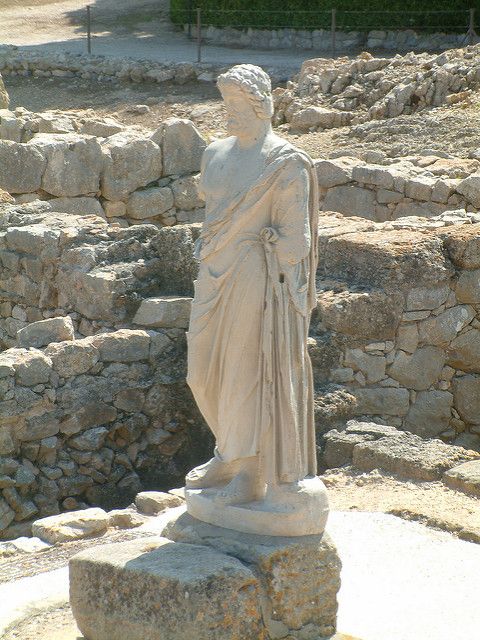
With a little imagination, Emporium and Emporiae come to life before your eyes against the backdrop of the sparkling blue Mediterranean. Walkways make visiting the ruins a breeze, and well-placed placards detail in English and Spanish exactly what each space was used for. Sites include floor mosaics, public baths, defensive walls, temples and an amphitheater. Don’t miss the Archaelogy Museum of Catalonia at Empúries, which showcases objects uncovered during the excavations and offers a glimpse into Greek and Roman life.
Recommended Videos
The Site Where Two Ancient Civilizations Meet
On Spain’s magnificent Costa Brava, in the province of Girona, an invisible time portal beckons you to enter and explore the region’s distant past. The Empuries Archeological Site presents the remains of the Ancient Greek city of Emporium and the Roman city of Emporiae, which for a time existed peacefully side-by-side. This was the gateway through which the Greek and Roman empires introduced their culture to the Iberian Peninsula.
Empuries is located approximately 40 minutes from Girona and approximately 2 hours from Barcelona by car. A bus or train will also get you there, making it an ideal day trip. If you stay in either city, you can book a guided bus tour, but this will limit your time at Empuries and allow you less flexibility.
You don’t have to be a lover of history or archeology to be drawn in by the ancient siren song of Empuries. All you need is a healthy dose of curiosity and these nine reasons.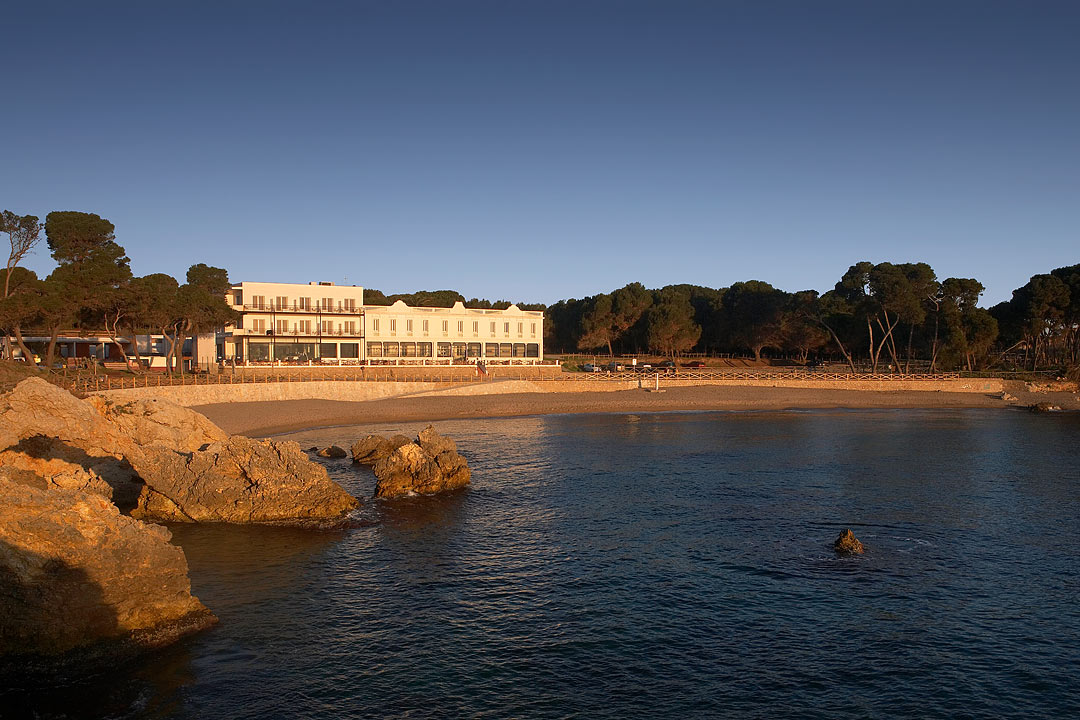
Disclaimer: Our visit to Empuries was hosted by Patronat de Turisme Costa Brava, Girona. All opinions are entirely my own.
1. A One-Of-A-Kind Experience
Overlooking a postcard-worthy stretch of Mediterranean beach on the Gulf of Roses lies Empuries. This archeological site is the only one of its kind in the region where both Greek and Roman settlements can be explored and compared side-by-side.
Allow 90 minutes to 2 hours — longer if you like — to wander through the two sets of ruins and the small museum. A map of the site, as well as audio guides in an impressive number of languages, is included in the 6-euro admission fee.
2. The Greek City
Greek traders came ashore on the Iberian Peninsula in the sixth century B.C. and founded a commercial settlement.
Looking at the remains of the town’s defensive walls, it seems remarkable that they symbolized the town’s security as far back as the first century B.C.
Among the remnants of the civilization that once thrived there, you will recognize a temple, the public square and market, and a second-century B.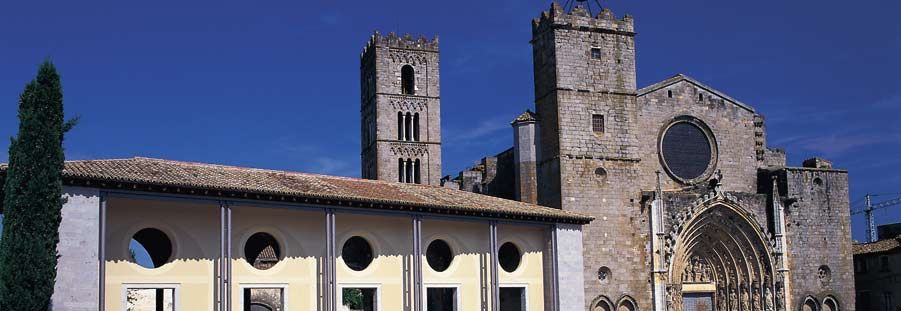
Walk down to the beach to see the remains of the ancient port jetty. Then fast-forward over 2,000 years, and picture the arrival of the Olympic flame on Spanish soil on its way to Barcelona for the 1992 Summer Olympics.
Simon Lock
3. The Roman City
The larger and more heavily excavated of the two sections of Empuries is the Roman city, which dates from the first century B.C. to the first century A.D.
The town has a typical Roman look and feel to it: rectangular in shape, laid out in a grid, and walled. You will find Roman baths, the amphitheater, the forum, and some of the city’s shops. It’s easy to imagine this city teeming with life and activity: chariots rolling down the streets, citizens going about their daily lives, and Roman soldiers everywhere.
Simon Lock
4. Stunning Mosaics
In the Roman section of Empuries stands what once was the home of a wealthy citizen. The large 2,000-year-old house is remarkable in its own right, but the mosaics take center stage.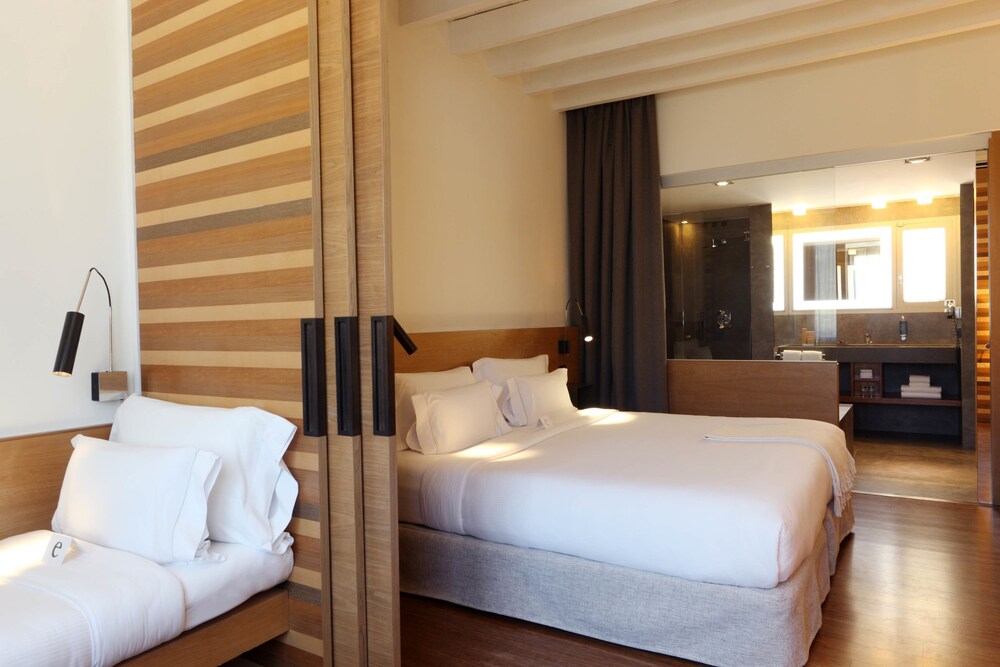
In this and other Roman houses, mosaic treasures have been painstakingly excavated and restored. Geometric designs, as well as depictions of nature and mythological scenes, can be admired onsite and in the museum.
Simon Lock
5. Archeology Museum Of Catalonia At Empuries
The Archeology Museum of Catalonia at Empuries, located between the two city sites, houses exhibits that offer a glimpse of life in the ancient Greek and Roman cities. You can view artifacts uncovered during the excavations, as well as videos telling the story of life in Empuries in an informative and entertaining style.
The museum contains a fascinating selection of ancient objects to stir the imagination: coins, household items, utensils, jewelry, children’s toys, mosaics, and paintings. The exhibits add additional form and dimension to the story told by the ruins outside.
Access to the museum for people with reduced mobility is currently limited.
6. Empuries Is Family And Dog Friendly
A visit to Empuries is an ideal multi-generational family outing.
The 6-euro admission charge is a bargain, but there are reduced rates for seniors, teachers, and other groups. Also, children under 16 and people with disabilities, along with their companions, are admitted free, making Empuries affordable for families.
Paved walkways make navigating the ruins easy, and well-placed signage in English and Spanish describes how each structure was used.
Some parts of the Roman city are not accessible for people in wheelchairs or who have difficulty walking. Some of the terrain is uneven and involves stairs. A clearly marked designated route is available for visitors in wheelchairs or with reduced mobility.
There is no onsite parking, but nearby facilities are affordable and sometimes — depending on the time of year — free.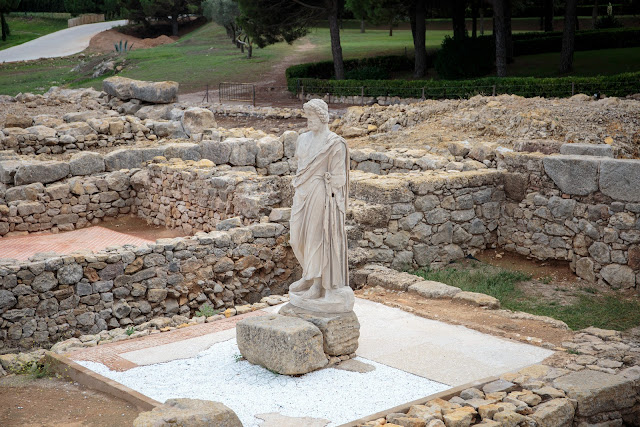
Dogs are welcome at the archeological site as long as they are on a leash. However, you can’t bring Fido — unless he is a service dog — into the museum.
Simon Lock
7. Empuries Is A Living Archeological Site
By the third century A.D., Empuries had been completely abandoned. Over time, all traces of the once-great cities slowly surrendered to the sand.
In 1908, archeologists discovered the ruins at Empuries and began to unearth its long-hidden treasures. To date, 25 percent of the site has been uncovered.
Excavations and research are ongoing. Each time you return, you will see the most recent discoveries. Many enthusiasts from Spain and other European countries make an annual visit to Empuries to see the newest archeological finds.
Scp photography / Shutterstock
8. Beaches
If the weather is fine, make sure to bring along your swimwear and a towel.
Getting a little too hot? Take some off-the-beach time to cool off and picnic in the pine forest that lies between the medieval town of Sant Martí de Empuries and the jetty. You can relax while the kids play in the park.
Ivan Marc / Shutterstock
9. The Village Of Sant Marti D’Empuries
The ruins of the original sixth-century B.C. Greek settlement lie under the village of Sant Marti d’Empuries. This 10th-century village makes a perfect ending to a day of time travel and beaching.
The village center has been tastefully restored, and the late gothic church is also worth a visit for one final history fix.
In Sant Marti d’Empuries, you’ll find a variety of restaurants serving traditional Catalonian specialties as well as some innovative dishes making the most of the area’s glorious bounty.
Pro Tip
Spring and fall are ideal seasons to visit Empuries. You’ll miss the summer heat and crowds, as well as the unpredictable winter weather. Also, no matter what time of year you visit, there is no shade to be found among the ruins, so be sure to bring a hat and copious amounts of sunscreen.
Related Articles:
- The Best Day Trips From Barcelona, Spain
- A Moment In Time: Walking My Menorca Footsteps 40 Years Later
- Alcazar De Segovia: The Magnificent Spanish Castle That Inspired Disney
- 10 Places To Explore Along Galicia, Spain’s Coast Of Death
- Setenil De Las Bodegas, The Town Built Under A Rock
GREAT EMPIRES OF ANCIENT | Science and life
From school
history course we know about
emergence of the first states
earth with their peculiar way of life,
culture and art. distant and
in many ways the mysterious life of people
past times worried and
awakened the fantasy.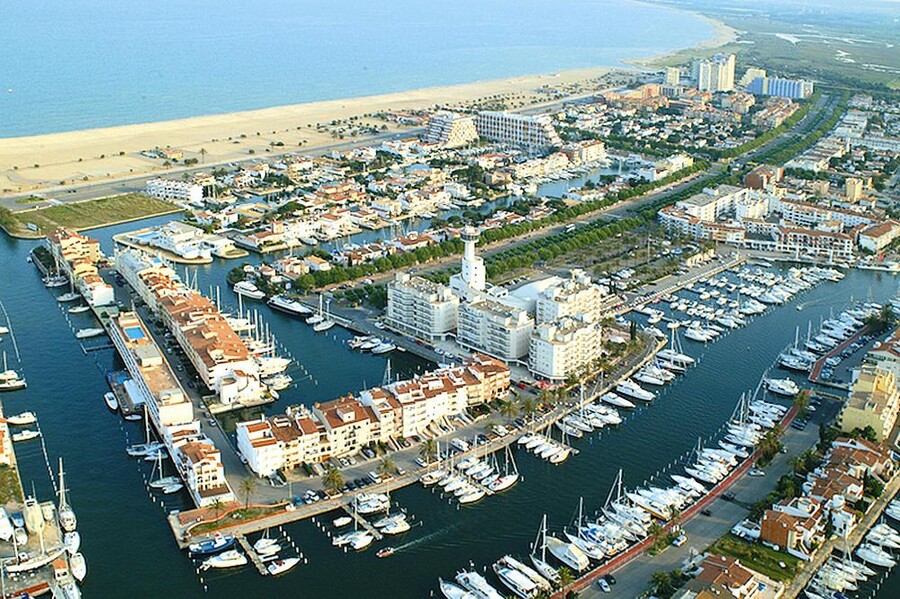
many would be interested to see
maps of the greatest empires
antiquities placed nearby. Such
comparison makes it possible
feel the size of giant
once state
formations and the place occupied by them
on earth and in human history.
Egypt. The empire reached its largest size in 1450 BC. e.
Greece. Dark on the map marked the land where the Greek culture flourished.
Persia. The territory of the empire in 500 BC. e.
India. The territory of the country reached its largest size in 250 BC. e.
China occupied such territory in 221 BC. e.
The Roman Empire at its peak – the beginning of the 2nd century AD.
Byzantium in its heyday – VI century.
Arab Caliphate. It reached its largest size in 632 AD. e. A118 years later, the area of the Caliphate was significantly reduced (dark shading).
‹
›
View full size
State –
ancient public education and
means the territory occupied
settled population, subject to
the same power.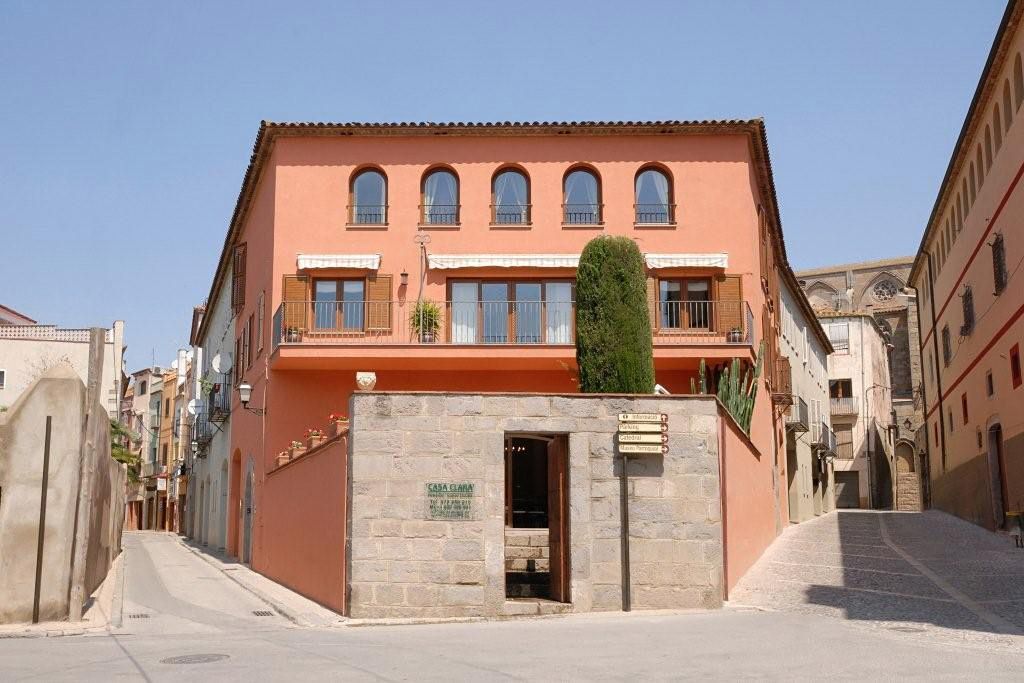
state structure
already thought by ancient thinkers.
For example, the Greek philosopher
Aristotle saw in the state
ultimate natural form
hostel, important for a person,
which by its very nature
“a political being”. More
Moreover, he considered the state
“environment quite happy
life.”
In the Middle Ages and in
later time in concept
“state” began
to invest contractual beginnings between
man and sovereignty. IN
natural state of man
not enough wrong, believed
English thinkers of the 17th century John
Milton and John Locke, while providing
them, which he finds in
state,
approved under the contract
for this purpose.
True son of the age
enlightenment, Jean Jacques Rousseau saw
the meaning of the formation of the state in
respect for the interests of each
citizen. It is necessary for people to
“find a join form that
would protect and provide
the identity and property of each member
society so that everyone
united with others, obeyed
would only remain to himself
be as free as
before.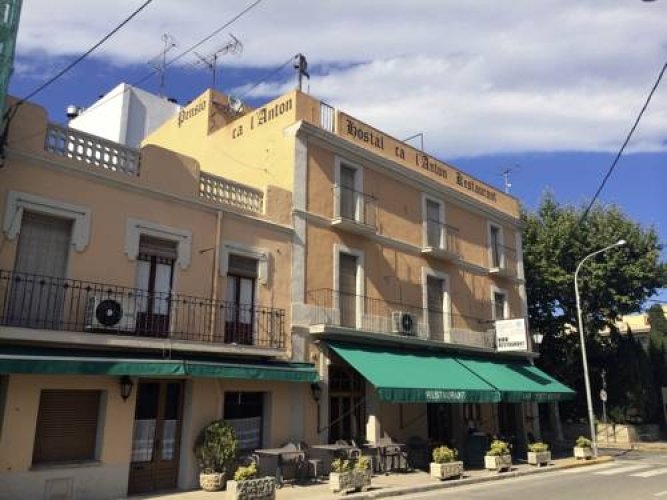
alienable” – basic provision
Rousseau.
Another 8-9 thousand years
ago people began to move to
sedentary lifestyle. Appeared
agriculture and the first domestic
animals. There was a so-called
neolithic revolution, which
brought people to new conditions
life. Agriculture could already
provide a person with enough
food, so hunting and
gathering retreated for a second
plan. There was a division of labor
between members of the same group
at the head stood the leaders who ruled
communities of people. With the passage
time there was a need for
public buildings, and began
construction
palaces, temples, fortresses.
Writing and the beginnings arose
arithmetic, astronomy and medicine.
A huge role in
the rise of early civilizations
rivers played. The river is not only
waterway, but also a stable harvest,
it is no coincidence that in those distant
times people began to build
canals and dams. But since
scattered tribes can’t handle
there were major reclamation
buildings, groups of farmers
united.
public entities
arose in Mesopotamia, between the Tigris and
Euphrates, where the flowering
culture.
Modern
archaeologists and historians distinguish
several conditions for
to name ancient communities of people
state. The first one is not
less than five thousand people
worshiping the same gods.
Power is equipped with apparatus
officials, and certainly
writing that exists in any
form. Large buildings – palaces and
temples are also a must
statehood. Population
divided by specialty
everyone could no longer do everything for themselves
yourself and your family. So along with
priests and soldiers appeared
artists, philosophers, builders,
blacksmiths, weavers, potters, reapers,
merchants and so on.
Ancient empires,
played a role in history
humanity, possessed all
the conditions listed. But
in addition, they were characterized
long political
stability and well-established
communication to the most remote
outskirts, without which it is impossible to manage
huge territories.
great empires had great
armies: the passion for conquest was
almost manic. And overlords
such states were sometimes sought
impressive success, subordinating
vast lands on which
gigantic empires arose. But
time passed, and the giant descended from
historical scene.
First Empire
Egypt. 3000-30
BC
This empire
existed for three millennia
longer than any other.
The state arose, according to the last
data, more than 3000 years BC, and
when did the merger take place
Upper and Lower Egypt (2686-2181),
formed the so-called
Ancient kingdom. The whole life of the country
was associated with the Nile River, with its
fertile valley and delta
Mediterranean Sea. Ruled by Egypt
pharaoh (the word means warehouse
food), sat on the ground
governors and officials, and in general
public life in the country
quite developed (see “Science and
life” No. 1, 1997 – “Not yet
the stone age is over” – and No. 5, 1997
– “Ancient Egypt. Pyramid
power”).
officers, scribes,
surveyors and local priests. Pharaoh
was considered a living deity, and all
major sacrifices
did it himself.
The Egyptians fanatically believed in
afterlife, were dedicated to her
cultural objects and majestic
buildings – pyramids and temples.
Hieroglyphic-laden walls
burial chambers told about
life of the ancient state
more than other archaeological
finds.
The history of Egypt splits into two
period. The first – from the foundation to 332
BC, when the country
conquered by Alexander the Great. AND
second period – reign
Ptolemaic dynasty – descendants
one of Alexander’s generals
Macedonian. In 30 BC
Egypt was conquered by a younger and
powerful empire – Roman.
Cradle
Western culture
Greece. 700-146
BC
Southern Balkan
people settled on the peninsula
tens of thousands of years ago. But only with
7th century BC, one can say
about Greece as a large, homogeneous in
cultural education,
albeit with reservations: country
was an alliance
city-states united
at the time of an external threat, as,
for example, to reflect the Persian
aggression.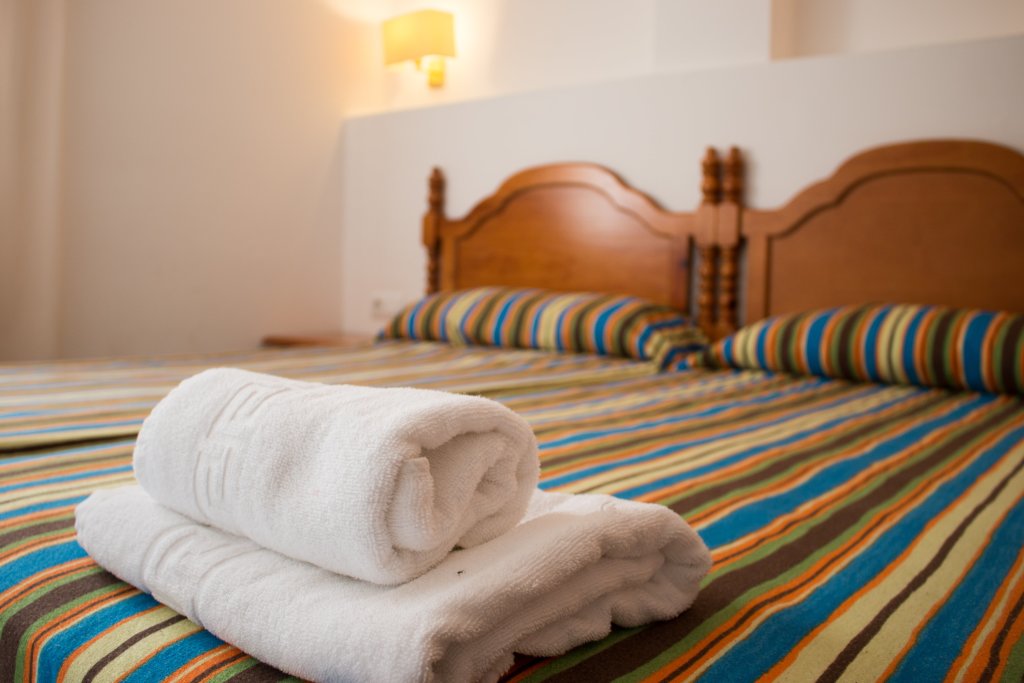
Culture, religion
and above all language were those
the framework within which
the history of this country. In 510 to
new era most cities
freed from sovereignty
kings. In Athens, it soon became
rule democracy but right
votes were only
male citizens.
State
device, culture and science of Greece
became a model and inexhaustible
source of wisdom for almost everyone
later states of Europe. Already
Greek scholars questioned
about life and the universe. Exactly at
Greece laid the foundations for such
sciences like medicine, mathematics,
astronomy and philosophy. Greek
culture has ceased to develop,
when the Romans took over the country.
The decisive battle took place in 146
year BC near the city of Corinth,
when the armies of the Greek Achaean
unions were broken.
Dominion
“King of kings”
Persia. 600-331
years BC
In the 7th century BC
Christ’s nomadic Iranian tribes
the highlands revolted against
Assyrian dominion.
The winners founded the state
Mussel, which is then together with
Babylonia and other neighboring
countries has become a global
power. By the end of the 6th century BC
she, led by Cyrus II, and then
his successors, who belonged to
Achaemenid dynasty, continued
conquest. In the west of the land of the empire
out to the Aegean Sea
in the east, its border ran along
the Indus River, in the south, in Africa, possessions
reached the first rapids of the Nile.
(Most of Greece was occupied in
time of the Greco-Persian War
troops of the Persian king Xerxes
480 BC.)
The monarch was called “King
kings”, he stood at the head of the army and
was the supreme judge. The possessions were
divided into 20 satrapies, where
the king’s viceroy ruled in his name.
Subjects spoke four
languages: ancient Persian,
Babylonian, Elamite and Aramaic.
In 331 BC Alexander
Macedonian defeated the hordes of Darius II
– the last of the dynasty
Achaemenids. So ended
history of this great empire.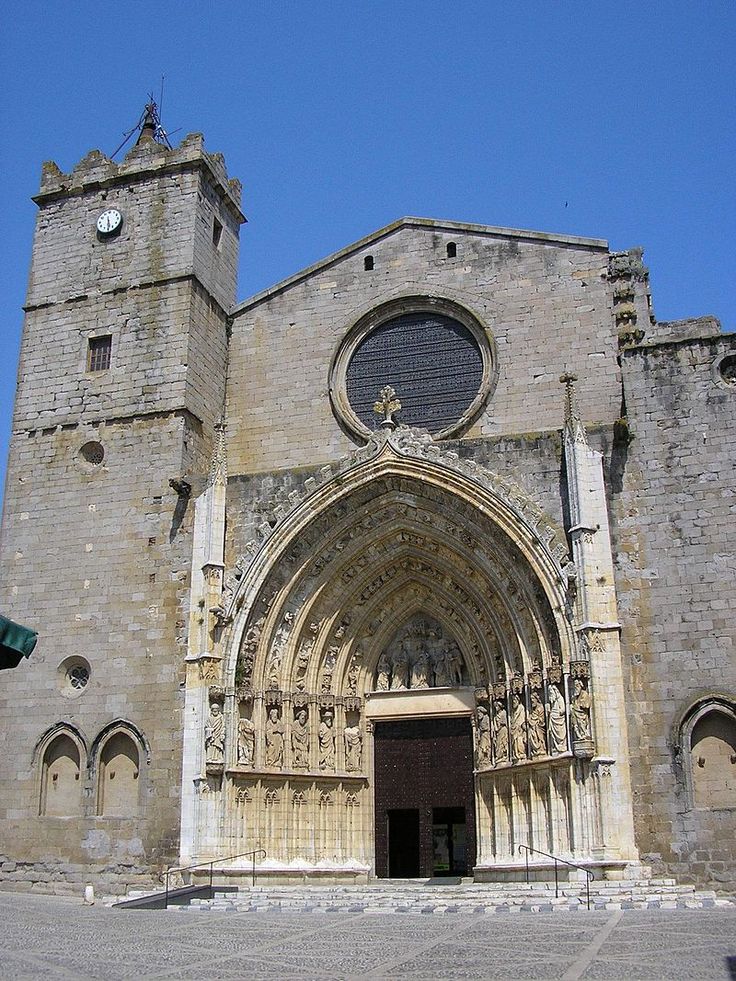
Peace and love –
for all
India. 322-185 years
BC
Traditions dedicated to history
India and its rulers, very
sketchy. Few
information refers to the time
when the founder of the religious
teachings of the Buddha (566-486 BC),
the first real person in history
India.
In the first half of the 1st millennium before
new era in the northeastern part
India, many small
states. One of them – Magadha –
rose thanks to successful
conquest wars. King Ashoka,
belonged to the Maurya dynasty,
expanded the domain so much that
they occupied almost the entire present
India, Pakistan and part
Afghanistan. The king was obeyed
administrative officials
management and a strong army.
At first, Ashoka was reputed to be cruel
commander, but, becoming
a follower of the Buddha, preached
peace, love and tolerance and received
nickname “The Converted”. This
the king built hospitals, fought with
deforestation, and for
his people held a soft
politics.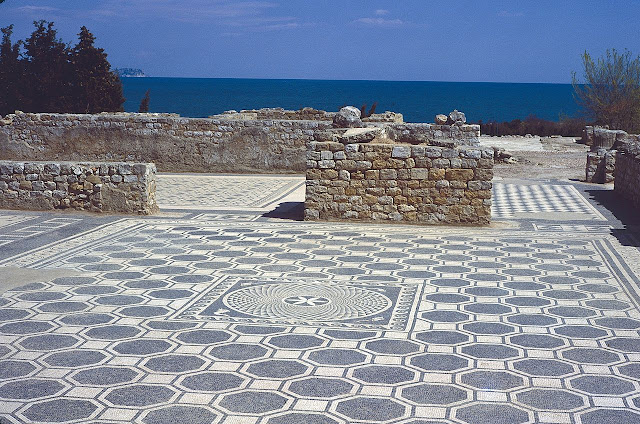
carved on rocks, columns, –
ancient, accurately dated
epigraphic monuments of India,
talking about management
state, social
relationships, religion and culture.
Before his ascension Ashoka
divided the population into four castes.
The first two were privileged
– priests and warriors. Invasion
Bactrian Greeks and internal
strife in the country led the empire to
decay.
Start over
than two thousand years of history
China. 221-210
years BC
In the period called in history
China Zhanyu, many years of struggle,
led by many small
kingdoms, brought victory to the kingdom
Qin. It united the conquered
land and in 221 BC
formed the first Chinese
empire led by Qin Shih Huangdi.
The Emperor made reforms
strengthened the young state.
The country was divided into districts
established military garrisons for
maintaining order and peace,
road network was built and
channels, for officials it was
introduced the same education, and
throughout the kingdom there was a single
monetary system.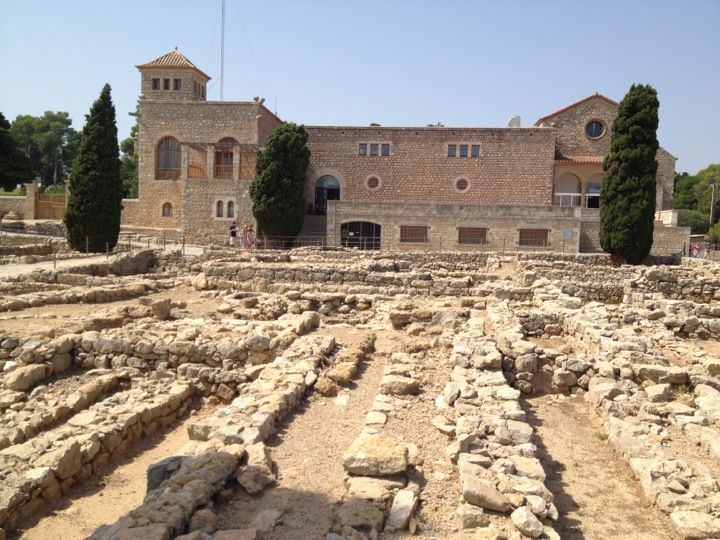
the order in which people are obliged
were working where
demanded interests and needs
states. Even such a
curious law: all wagons
should have equal distance
between the wheels to keep them moving
along the same tracks. In the same
reign was established great
wall of china: it connected
built earlier by northern
kingdoms separate sections
defensive structures.
Qing Shi Huang died in 210. But
subsequent dynasties left
intact foundations of construction
empires founded by its founder.
In any case, the last
dynasty of emperors of China
ceased to exist in
the beginning of our century, and the borders
states remain
virtually unchanged to this day
day.
Army,
guardian of order
Rom. 509 to
AD – 330 AD
Romans in 509 BC
Etruscan king expelled from Rome
Tarquinius the Proud. Rome has become
republic. By 264 BC
her troops took over everything
the Apennine Peninsula. After
this began the expansion in all
cardinal directions, and by 117 AD
the state extended its borders
from west to east – from
Atlantic Ocean to
Caspian Sea, and from south to north –
from the rapids of the Nile and the coast of the whole
North Africa to the borders with
Scotland and downstream
Danube.
Rome was ruled annually for 500 years
elected two consuls and a senate,
in charge of state
property and finance, foreign
politics, military affairs and
religion.
30 BC Rome
becomes an empire led by
Caesar, but in essence – the monarch.
The first Caesar was Augustus. Big
and a well-trained army
participated in the construction
huge network of roads, their common
length – more than 80000
kilometers. beautiful roads
made the army very mobile and
allowed to quickly reach the most
remote corners of the empire.
Keep the country from falling apart
helped and appointed by Rome in
provinces proconsuls – governors and
officials loyal to Caesar. This
contributed to the settlements of the soldiers,
who have served, located
in conquered lands.
Roman state, as opposed to
many other giants of the past,
fully consistent with the concept
“empire”. It also became
a model for future applicants
for world domination. European
countries have inherited a lot from
the culture of Rome as well as the principles
building parliaments and
political parties.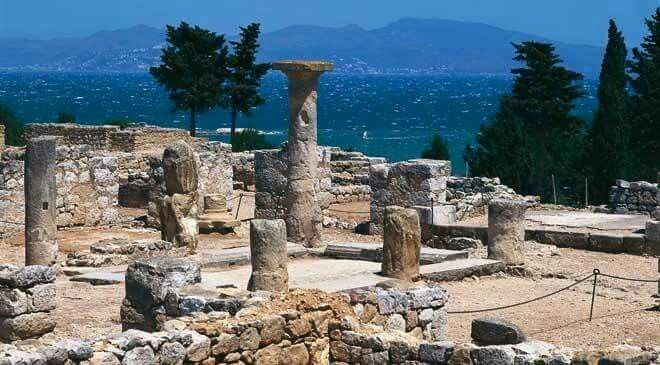
Revolts of peasants, slaves and
urban plebs, all
the growing pressure of the German and
other barbarian tribes from the north
forced Emperor Constantine I
move the state capital to
the city of Byzantium, later named
Constantinople. It happened in
330 AD. After Constantine
Roman Empire in fact
divided into two – Western and
Eastern, which was ruled by two
emperor.
Christianity –
stronghold of the empire
Byzantium.
330-1453 AD
Byzantium emerged from the eastern
remnants of the Roman Empire. capital
became Constantinople, founded
emperor Constantine I in 324-330
years on the site of the colony of Byzantium
(hence the name
states). From now on
Byzantium began to separate
bowels of the Roman Empire. Big
role in the life of this state
played the christian religion,
become ideological
foundation of an empire and stronghold
Orthodoxy.
Byzantium existed for more than
thousands years. his political and
she achieved military power
during the reign of the emperor
Justinian I, 6th century AD.
It was then, having a strong army,
Byzantium conquered the western and
southern lands of the former Roman Empire.
But within these limits the empire
has existed for a short time. In 1204
year under attack
Crusaders fell Constantinople,
which is no longer
rose, and in 1453 the capital
Byzantium was captured by the Ottoman Turks.
In the name of Allah
Arabic
Caliphate. 600-1258 AD
Prophet Muhammad’s sermons
laid the foundation
religious-political movement
in Western Arabia. received
the name “Islam”
contributed to the creation in Arabia
centralized state.
However, soon as a result
successful conquests was born
vast Muslim empire
Caliphate. On the presented map
shows the largest range
conquests of the Arabs who fought under
the green banner of Islam. In the East
the Caliphate included the western
part of India. Arab world left
indelible marks in history
mankind, in literature,
mathematics and astronomy.
From the beginning of the 9th century Caliphate
gradually starts to fall apart
– weak economic ties,
vastness subject to the Arabs
territories that had their own culture and
traditions did not contribute
unity.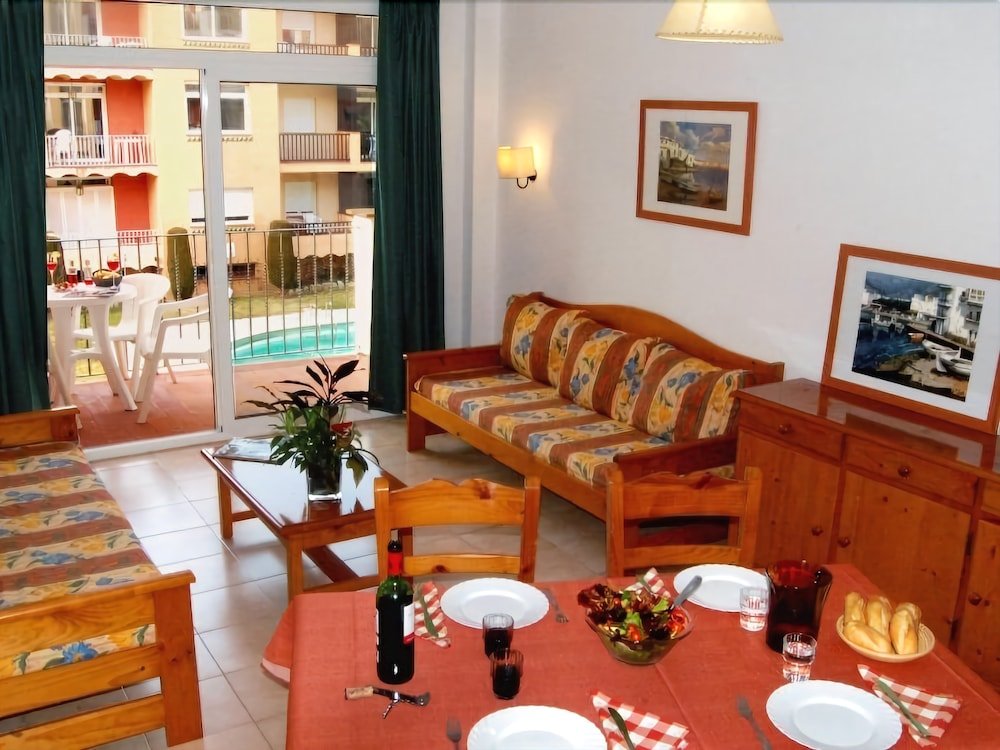
conquered Baghdad and the Caliphate
split into several Arabic
states.
RIA Novosti – events in Moscow, Russia and the world today: topics of the day, photo, video, infographics, radio
RIA Novosti
1
5
4.7
96
7 495 645-6601
FSUE MIA Rossiya Segodnya
6 https://xn--c1ac1ac1ac1 wards/
Registration successful!
Please follow the link from the email sent to
Politics
Worldwide
Economy
Society
Accidents
Army
Science
0006 Culture
Religion
Tourism
Putin signed a decree on retaliatory measures to seize Russia’s assets abroad
Popular
Biden deserves a second term in the White House
Viktoriya Nikiforova
6 Anti US Chinese paranoia received new reinforcement
Dmitry Kosyrev
“Inflated expectations”.
David Narmania
Special report
Analytics
Photo
Video
Infographics
Tests
Polls
Podcasts
Religion
“Unexpected”. The Vatican is preparing to bring down the EU
“We are not breaking anything”: Europe has acted cunningly with Russia
Good news
Recommended
Showbiz
“Galya, we have a cancellation!” Concerts of which stars were refused to be held in Russia
Nauka
Covered with a bubble. What will follow the most powerful magnetic storm
Science
Secret brain signals. Scientists have found unknown connections between the mind and body
Poll
How do you plan to spend the May holidays?
I will rest at home
0%
I will go out to nature/dacha
0%
I will go on a trip
0%
I have a job waiting
50 90 090 5
Cavalryman, thrice Hero, Marshal: legendary Semyon Budyonny 14
Symbol of courage and valor: St.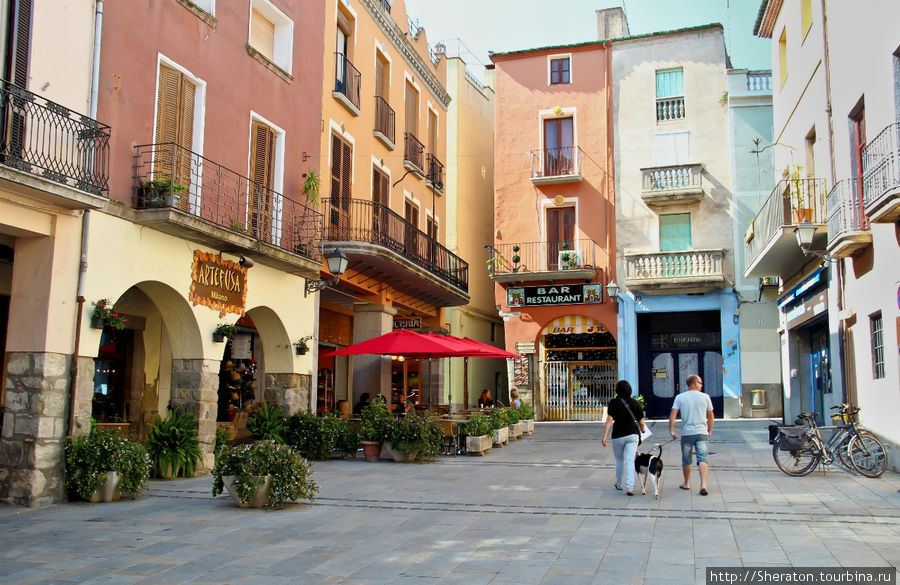
Showbiz
“Star Factory” celebrated its 20th anniversary: as it was 90 90 Special military operation 6 Ukraine
Under continuous fire : shelling in the DNR 10
Yesterday, 12:35
“NATO out”: a rally in Sofia for Bulgaria’s withdrawal from the alliance
Your browser does not support this video format.
The jokes are over. US warned Zelensky
“Russians are on the alert.” The Pentagon went to extreme measures
“It started that autumn”: how criminal groups rebuilt business in Russia
Culture
Stalin, Chaplin and Orlova: how the legendary film “Volga-Volga” was filmed
Tourism
Vacation in a “floating hotel” “: prices and new cruise routes along the rivers of Russia
De-Russification of Ukraine smoothly turns into de-Ukrainization
Vladimir Kornilov
Censorship of the doomed: Tucker Carlson was removed from television
Petr Akopov
The West began to guess why they do not like it
Victoria Nikiforova
Tennis
Several Russians signed declarations to participate in Wimbledon
5 06 Roma suffer their first defeat since March 19 in Serie A
Football
“Al-Nasr” with Ronaldo flew out of the Saudi Arabian Cup0005
Tennis
Jabeur withdrew from the tennis tournament in Madrid
Login
Password
5
Restore password
Register
0006 Link expired
Back
Registration on the site
Password
I accept the terms of the agreement and give my consent to the processing of personal data in accordance with
with Privacy Policy
Federal State Unitary Enterprise “International Information Agency “Russia Today”,
located at the address: Russia, 119021, Moscow, Zubovsky Boulevard, 4.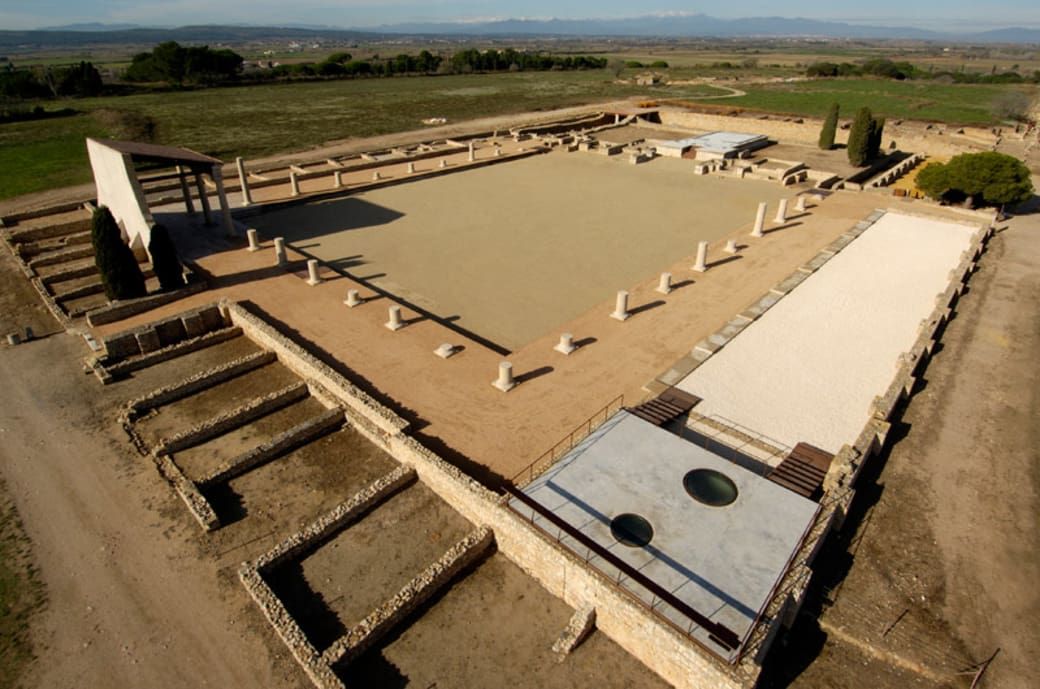
Log in with login and password
Your data
Password recovery
Back
Password recovery
Password recovery link sent to
Recovery password 2
New password
Confirm password
Write to author
Subject
92
Your city
Your E-mail
Your message
Message sent!
Thank you!
An error has occurred!
Try again!
Feedback
How can I help?
If none of the options apply,
click here to contact us
Feedback
To use the feedback form,
you must be logged in.
Unblock account
You have been blocked for violating
rules for commenting on materials
The term of blocking is from 12 to 48 hours, or forever.
If you do not agree with the blocking, fill out the form.

